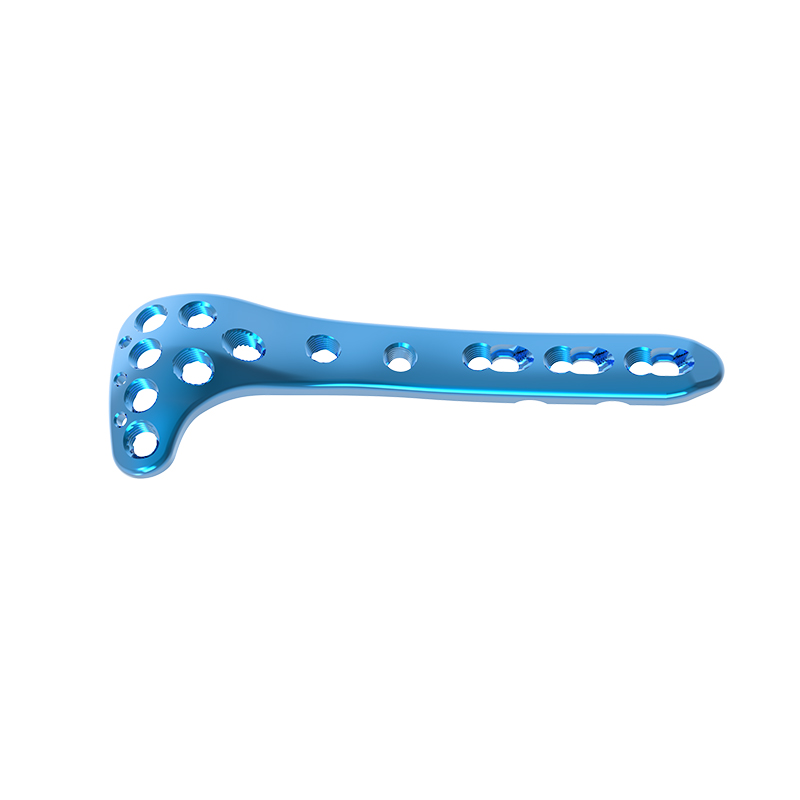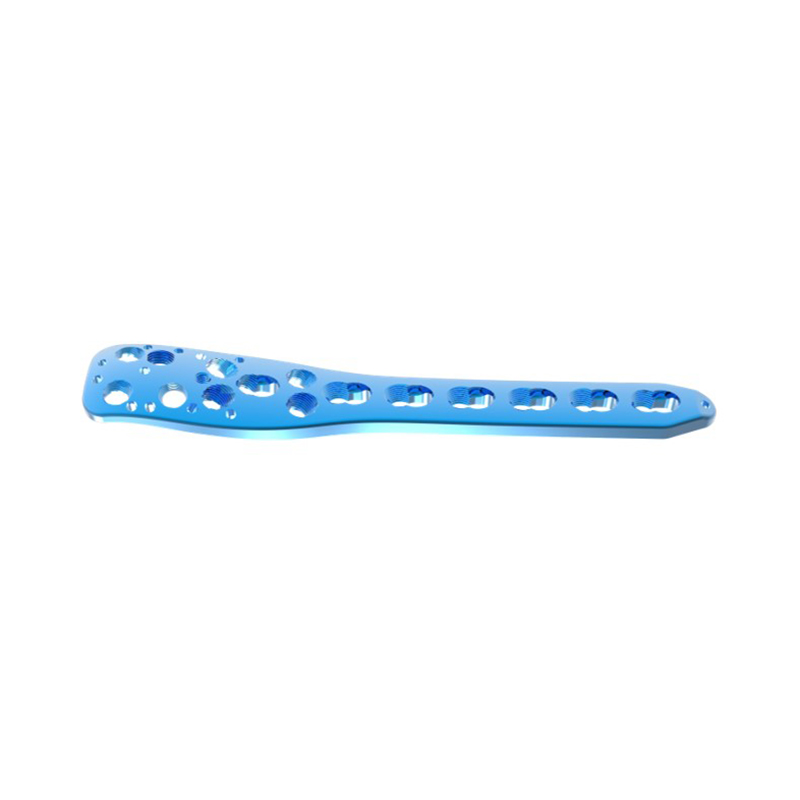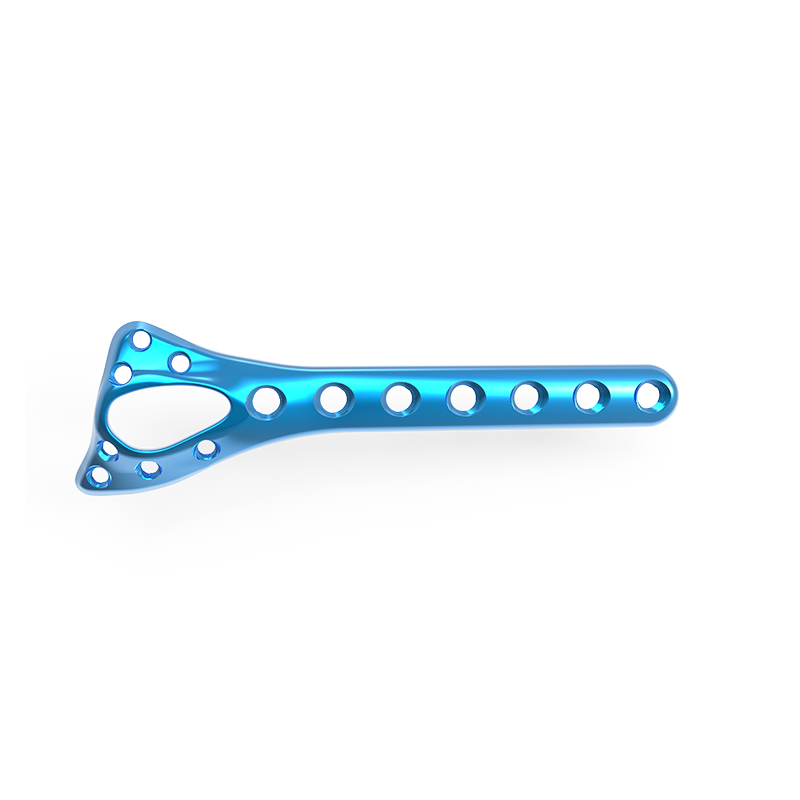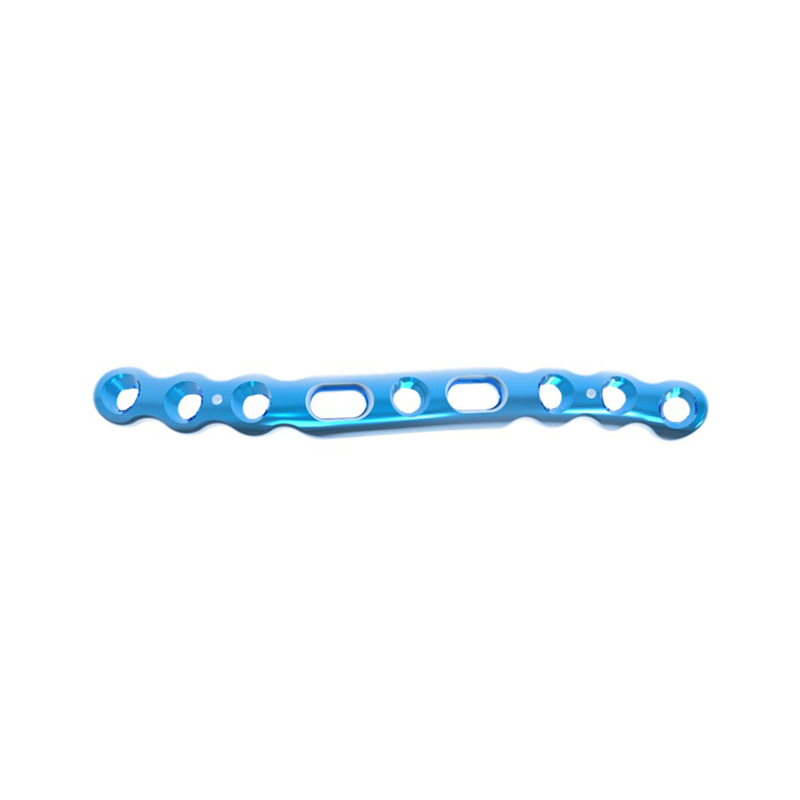Proximal Lateral Tibia Locking Compression Plate IV
Product Features
● Anatomically contoured to approximate the anteromedial proximal tibia
● Limited-contact shaft profile
● Tapered plate tip facilitates percutaneous insertion and prevents soft tissue irritation
● Left and right plates
● Available sterile-packed
Three K-wire holes with notches that can be used for provisional fixation using K-wires and sutures.
Anatomically precontoured plates improve plate-to-bone fit which reduces the risk of soft tissue irritation.

Two rows of rafting screws allow placement of the screws to capture posterior medial fragments while also providing the ability to avoid or abut proximal tibial components in periprosthetic fracture treatment.
Plate allows for placement of two kickstand screws.

The screw hole pattern allows a raft of subchondral locking screws to buttress and maintain reduction of the articular surface. This provides fixed-angle support to the tibial plateau.

Indications
Intended to treat fractures of the proximal tibia in adults and adolescents in which the growth plates have fused including: simple, comminuted, lateral wedge, depression, medial wedge, bicondylar combination of lateral wedge and depression, periprosthetic, and fractures with associated shaft fractures. Plates can also be used for treatment of nonunions, malunions, tibial osteotomies and osteopenic bone.
Product Details
| Proximal Lateral Tibia Locking Compression Plate IV | 5 holes x 133mm (Left) |
| 7 holes x 161mm (Left) | |
| 9 holes x 189mm (Left) | |
| 11 holes x 217mm (Left) | |
| 13 holes x 245mm (Left) | |
| 5 holes x 133mm (Right) | |
| 7 holes x 161mm (Right) | |
| 9 holes x 189mm (Right) | |
| 11 holes x 217mm (Right) | |
| 13 holes x 245mm (Right) | |
| Width | 11.0mm |
| Thickness | 3.6mm |
| Matching Screw | 3.5 Locking Screw / 3.5 Cortical Screw / 4.0 Cancellous Screw |
| Material | Titanium |
| Surface Treatment | Micro-arc Oxidation |
| Qualification | CE/ISO13485/NMPA |
| Package | Sterile Packaging 1pcs/package |
| MOQ | 1 Pcs |
| Supply Ability | 1000+Pieces per Month |
The plate is made of titanium or stainless steel and has multiple holes and locking screws that allow it to be securely attached to the bone. The locking mechanism prevents the screws from backing out and provides increased stability compared to traditional screw and plate systems.








